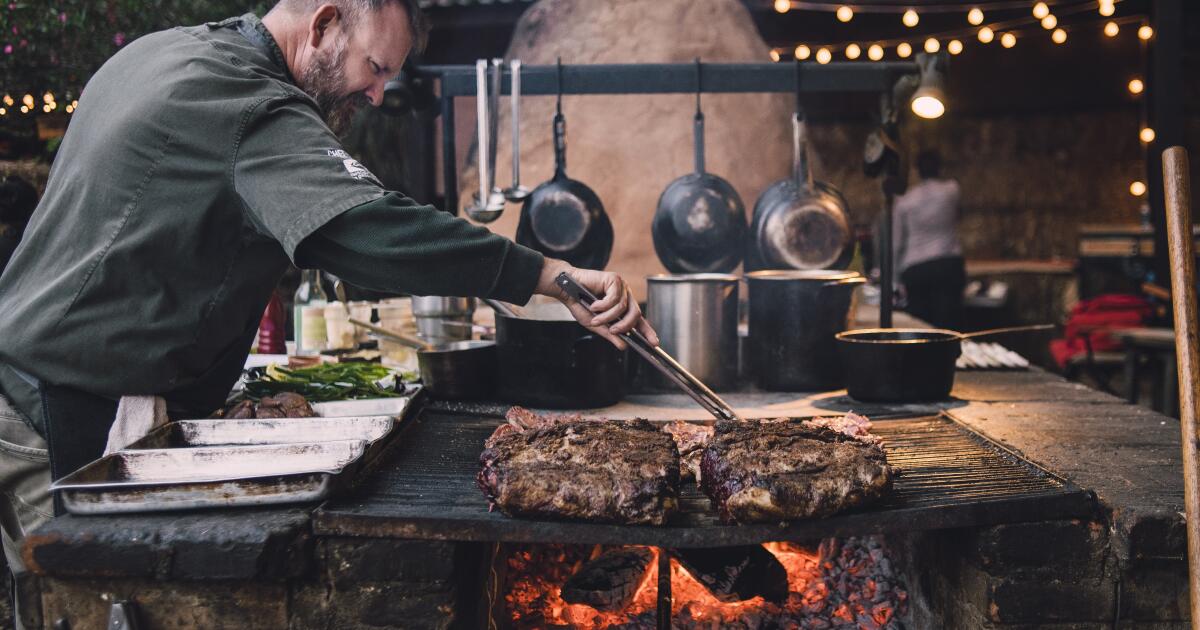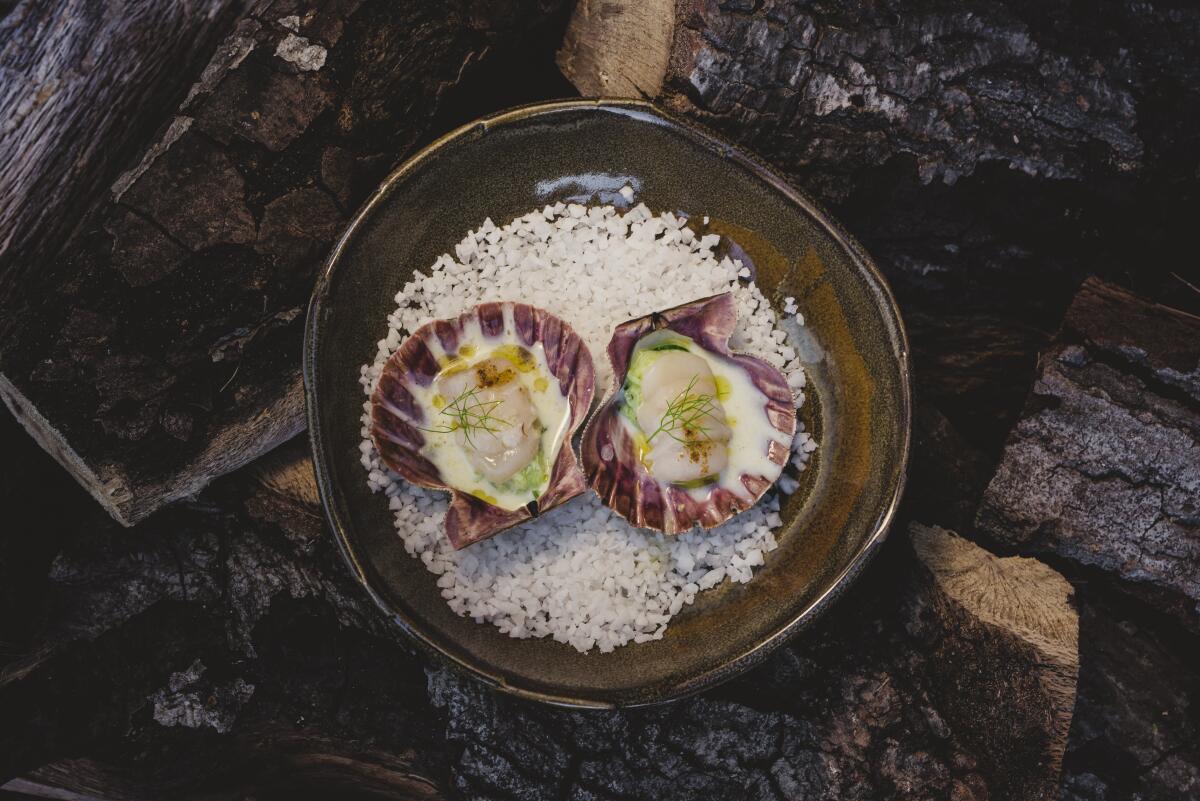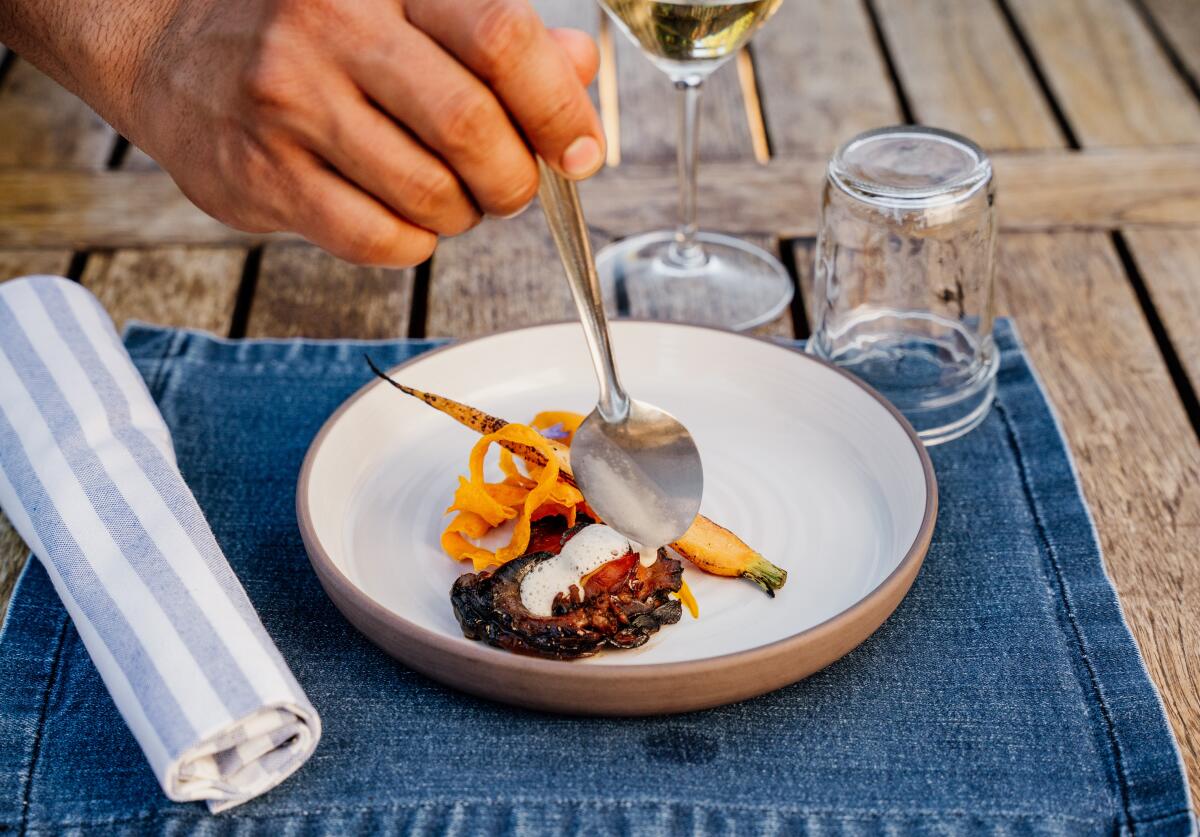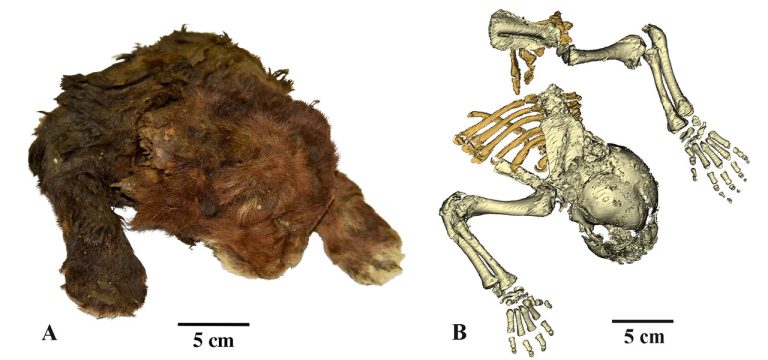
Baja California’s Valle de Guadalupe has grown exponentially over the past decade, beckoning millions of tourists to its ever-growing winery and restaurant community. And one of the valley’s chief draws, particularly for American visitors, has been Drew Deckman.
The Georgia-born chef cooked his way around the world in the early 2000s before settling permanently in Mexico in 2010 to open with his wife, Paulina, what has grown into three Valle de Guadalupe restaurants, including their flagship — the 12-year-old, all-outdoor restaurant and farm Deckman’s en el Mogor, which the World’s 50 Best Restaurants named among Latin America’s top 100 restaurants of 2022.
Now, after an eight-year search for a San Diego restaurant space, Deckman is set to open his first U.S. restaurant in North Park. Sometime in the spring, Watershed Restaurant will open in the two-story space formerly occupied by Hoxton Manor.
The 100-seat restaurant at 3131 University Ave. will include a dining room/bar with a 10-seat chef’s counter and oyster bar and an upstairs private dining room and 25-seat rooftop patio. The 4,200-square-foot project is being designed by Megan Power, principal architect and designer at San Diego’s Workind Studio, and formerly of Basile Studio.
Like Deckman’s en el Mogor, Watershed will work with local farmers, fishermen, wineries, breweries and artisan foodmakers to create a daily changing menu of about a dozen a la carte items, much of it cooked on a wood-fired grill.
“The way I cook is the way I cook,” he said in an interview last week from the Watershed space. “There’s a larger offering of the variety of ingredients in San Diego than in the Valle, but the ethic and philosophy and the way we treat people (there) is the same way we’ll run our business here. And I’m excited to actually have a kitchen where if it’s raining, I can come inside and cook.”
Deckman said the scarcity of rain, ingredients and infrastructure in the Valle de Guadalupe have led restaurateurs there to evolve a highly sustainable, low-waste, low carbon footprint ethos that he plans to duplicate at Watershed.
“The name and concept were derived from our desire to preserve the actual watershed of Southern California and northern Baja but also to mark a watershed moment in my life, to create an inspiring restaurant in the U.S. that defines the future of sustainable dining,” he said.

Drew Deckman at Deckman’s en el Mogor in Baja California’s Valle de Guadalupe.
(Courtesy of Deckman’s en el Mogor)
Just as he has done in the Valle, Deckman said his daily menu at Watershed will feature only whatever is fresh from the region’s farms and local fishermen that day, supplemented with specialty ingredients grown on Watershed’s own five-acre farm plot in Ramona. The plot, part of a 50-acre winery and sheep farm owned by one of Deckman’s investors, will be planted in early December with ingredients like artisan carrots grown with low-waste drip irrigation and no chemicals.
To reduce the restaurant’s carbon footprint, Watershed’s animal proteins will be sourced exclusively from San Diego County. Aquaculture farms in San Diego and Baja will also provide carbon-reducing plant proteins like seaweed and underutilized species like mackerel, grondin, hake and farmed oysters, mussels and clams. Also, wines and beers will be sourced only from the region stretching from Santa Barbara south to Baja.

Fire-roasted scallops at Deckman’s en el Mogor in Baja California’s Valle de Guadalupe.
(Courtesy of Deckman’s en el Mogor )
Deckman also plans to donate 1 percent of Watershed’s monthly revenues to help farmers launch carbon farming projects through grants, in partnership with the international nonprofit Zero Footprint.
Like the creation of “farm to table” cuisine before it, “sustainable farming” has become the catch phrase for most new restaurants in recent years. But Deckman said his goal is to make this style of food preparation more than a trendy phrase.
“It frustrates me that we have to even have these discussions. For me, it’s intrinsic. That’s what everyone should be doing. It’s the only solution that in 50 or 100 years, if we want to continue what we’re doing, those are the steps we have to take. The single-use life is just going to drive us off the planet,” he said. “If I can make one cook think the same way I do or take it to the next level … it will get better and spread farther.”
Deckman recently finished two years of filming a documentary based on seven different regions of Mexico. Deckman is the host-ambassador for the series and the producers are Coronado filmmakers Jill Bond an Ajay Sawhney, and it is scheduled to begin streaming on an as-yet unnamed network in early 2024.
Deckman said he has rented an apartment in San Diego to oversee construction and will be on-site every day for Watershed’s first six months, at least. He’ll commute the 90 minutes home to his wife and their two small children frequently but is entrusting his Baja restaurants to his wife and extended family while he gets Watershed off the ground.

An artisan carrot dish at=t Deckman’s en el Mogor in Baja California’s Valle de Guadalupe.
(Courtesy of Deckman’s en el Mogor)
Deckman said he’s excited to become part of the San Diego restaurant community after spending years driving up here three to four times a year to participate in food festivals, chef’s dinners and even some culinary events with his son and fellow chef Sam Deckman, the culinary director for San Diego’s Common Stock Hospitality Restaurants.
“I like San Diego a lot,” he said. “In the last 10 years, I’ve watched the food scene in San Diego improve in offerings and quality exponentially.”
One of the ways San Diego’s culinary scene has risen in stature is the arrival in 2019 of The Michelin Guide, which has since awarded three stars to Addison restaurant and individual stars to four other local restaurants: Jeune et Jolie, Soichi Suchi, Sushi Tadokoro and, most recently, Valle restaurant in Oceanside, which was opened in 2021 by Deckman’s fellow Valle de Guadalupe restauranteur-chef Roberto Alcocer.
Deckman earned his own Michelin Star in 2003 while running Restaurant Vitus in Reinstorf, Germany. But he said the Michelin Guide is not what drew him to San Diego (Michelin Guide will award its first stars in Mexico in 2024).
“I think it’s an error to say my goal is to a have a star because you’re putting all your eggs in one little basket, and if you don’t get the star, well, are you a failure?” he said. “Our goal is to have as full a restaurant as possible and lots of happy people. If Michelin thinks that what we’re doing is good enough to be in their guide, that’s awesome, and what an honor to be in that red book. But it’s not why we’re walking in here.”






